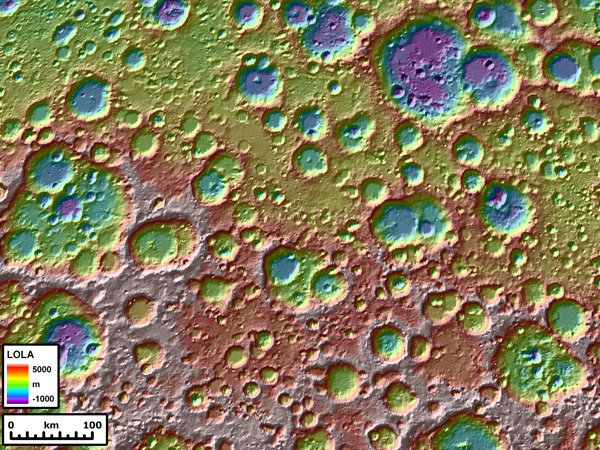Please note: Osher Rainforest will be closed for maintenance May 7-9.
Science News
One Year for LRO
September 16, 2010

Happy Birthday LRO!
It’s not really the Lunar Reconnaissance Orbiter’s birthday today, but it does mark one year that the satellite has been collecting data on our closest celestial neighbor, the Moon.
To celebrate, scientists are releasing exciting findings in this week’s edition of Science.
LRO’s initial objective was to provide information needed for a safe and effective exploration of moon, essentially creating a lunar atlas for a future robotic or manned mission to the Moon. NASA’s funding and direction has changed since LRO’s launch, but as Michael Wargo, chief lunar scientist at NASA, explained at a press conference today, the work LRO is doing is timeless and the data it’s collecting will be available for future generations of explorers and scientists.
Today also marks the “handing over the keys” of LRO, according to Wargo, from the exploration mission director to the science mission director. And with “spectacular scientific results” already from the mission, we should see even more in the future.
Or as Phil Plait puts it in his Bad Astronomy blog in Discover:
We've been observing the Moon for thousands of years, but it wasn't until LRO that we started to get a comprehensive and extreme close-up view of this neighboring world. Remember, when you look at these pictures you're seeing the Moon from a camera just 50 km (30 miles) above the surface, with a resolution of half a meter (18 inches!). The exploration phase of LRO has been nothing short of amazing; what will the science phase bring?
The results published in Science stem from the work of two different instruments on LRO.
The Lunar Orbiter Laser Altimeter (LOLA) enabled an extensive study of lunar craters. NASA scientists can reconstruct images from data that the LOLA is collecting—topographical maps from over 2.4 billion laser shots! (You can view an animation made from this process here.) By studying the craters, NASA scientists can understand the impact history and evolution of the Moon, which in turn allows a better understanding of early Earth and the Solar System.
The second piece of equipment is the Diviner lunar radiometer, which measures the lunar surface composition. Researchers are finding that the lunar surface (soil and rocks) is far more complex than originally thought. Besides the predicted traces of basalt and feldspar, Diviner has found a third type of rock on the Moon in five spots. As one of the geoscientists, Timothy Glotch, put it, these new spots “make for really juicy targets for lunar explorations.”
When will those lunar explorations happen? Hopefully, with more results from LRO, the Moon will get a little more respect soon. As Phil Plait says,
Every time I see a picture from LRO, I am reminded that the Moon is more than a pretty disk in the sky, it’s an entire world with its own complex history. And it’s right next door.
We really need to go back.
(To pay your respects to the Moon, join in International Moon Observation Night this Saturday at various locations. If you’re in the Bay Area, there will be events in San Francisco, Oakland and Moffett Field.)